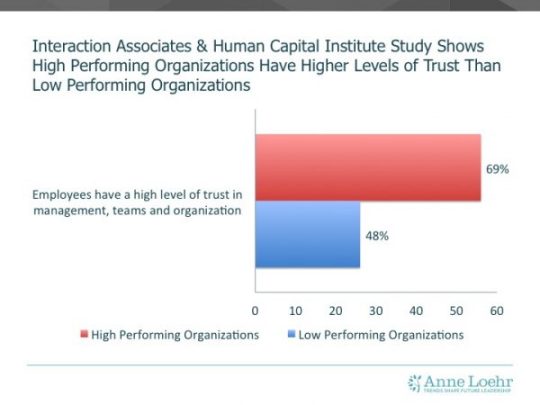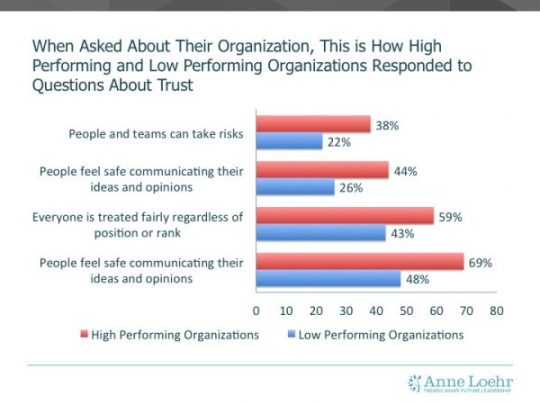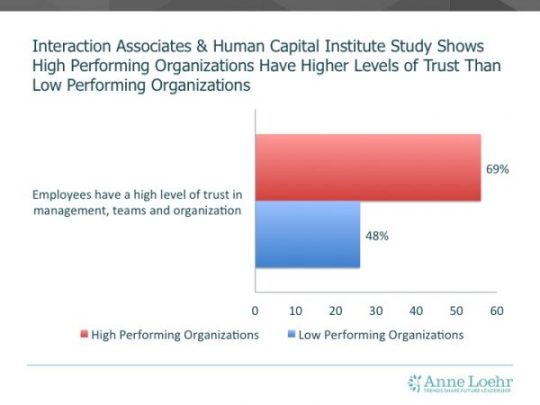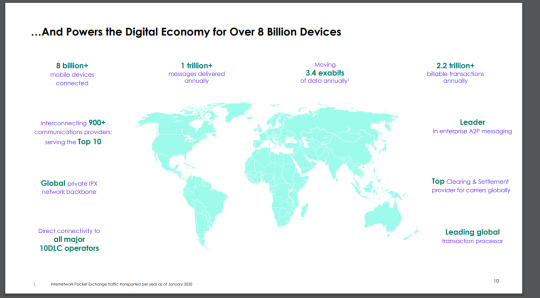#Valuation slide deck
Explore tagged Tumblr posts
Text
Why startup valuation slides are important?
Startup valuations can be a tricky subject. As an early-stage startup seeking investment, you need to understand how investors view valuation and what factors impact their perception. Your valuation slide deck is a key tool for clearly communicating your company’s worth to potential investors. Here’s why your valuation slides matter and how to create an effective deck:
Importance of Valuation Slides
– Sets expectations for investment terms. Your valuation sets the stage for the percentage of equity investors will require and the valuation caps for convertible notes. An unrealistically high valuation can turn off investors.
– Demonstrates your understanding of valuation methods. Using standard valuation methods like discounted cash flow analysis and comparable transactions shows investors you have a solid grasp of how startup valuations work.
– Supports your assumptions. Your valuation is based on certain assumptions about the market, your traction, future growth, etc. Investors will scrutinize these assumptions closely.
– Allows investors to benchmark you. Investors will compare your valuation to other startups at your stage in your industry. Your valuation needs to be defensible within this peer group.

Key Elements to Include
– Valuation history. Cover previous valuation events, like seed funding rounds, showing the progression of your valuation over time.
– Revenue growth forecasts. Project your revenue growth month-by-month or quarter-by-quarter for the next 3-5 years. Tie your assumptions to drivers like customer acquisition costs.
– Market size estimates. Include TAM (total addressable market) analysis to quantify your potential market opportunity. Refer to market research reports.
– Comparable transactions. Identify 3-5 startups in your space at a similar stage who have been acquired or gone public. Show their valuations at those liquidity events.
– Valuation methods. Use 2-3 standard methods like discounted cash flow, multiples of revenue, etc. to derive a sensible valuation range.
– Capitalization tables. Include cap tables showing the breakdown of equity ownership between founders, investors and stock option pools.
Download Sample Valuation Report
Valuation slide deck
Remember, your valuation slide deck is a key tool for demonstrating your startup’s progress and potential. Build persuasive slides that clearly communicate all the elements that drive your valuation. With a compelling deck in hand, you can have more productive conversations with investors.
#Sample Valuation Report#Valuation slide deck#valuation methods#startup valuation#startup valuation tool#online startup valuation calculator#startup valuation calculator#valuation calculator startup#early-stage startups with no revenue#valuating early-stage companies
0 notes
Text
Why Founders Are Filing Patents Before Pitch Decks
In 2025, the rules of startup success are being rewritten. It’s no longer enough to have a sleek pitch deck, a catchy product name, or a big market opportunity. Founders are waking up to a new reality: intellectual property (IP) is the first pitch—and patents are being filed even before investors see a single slide.
Pitch Decks Can’t Protect Your Idea
Startup founders often rush to perfect their pitch deck, eager to attract investors. But here’s the catch—once an idea is shared, it can easily be replicated. Without IP protection, a pitch deck can become an open-source blueprint for competitors.
Filing a patent early offers founders legal protection, ensuring that their idea can’t be copied, modified, or commercialized by others without consequences. In a world where information spreads fast and ideas are easily stolen, smart founders are locking in their rights from day one.
Investors Prefer Patented IP
Angel investors, VCs, and accelerators are now placing greater weight on startups that come to the table with patents or provisional applications in place. Why? Because patents signal three key things:
Market readiness – You’re not just dreaming; you’re executing.
Competitive moat – Your product has defensible advantages.
Lower risk – There’s a barrier to entry for copycats and rivals.
In many cases, a startup with a solid IP foundation will beat a flashier competitor without one.
Early Patents Build Long-Term Value
A patent isn’t just a shield—it’s also an asset. For founders, an early-stage patent can:
Increase company valuation
Open doors to licensing and revenue opportunities
Strengthen negotiating positions in partnerships and acquisitions
Serve as collateral for funding
Whether you’re in AI, biotech, SaaS, or hardware, protecting your core innovation gives you leverage—and leverage is currency in the startup world.
The Rise of Online Patent Filing Tools
With platforms like PatentZoom, founders can now file patents faster, more affordably, and with minimal friction. You no longer need to spend weeks coordinating with expensive law firms or navigating complicated legal systems.
PatentZoom offers:
Simple, guided patent application workflows
Access to expert patent professionals on-demand
Transparent pricing and faster turnaround
Secure, cloud-based document management
Filing a provisional patent before building your pitch deck has never been easier—or smarter.
The Smart Founder’s Sequence: Patent First, Pitch Later
In today’s fast-paced startup ecosystem, you can’t afford to pitch before you protect. Whether you’re preparing for your seed round or heading to an accelerator, your first move should be securing your idea.
Patent first. Pitch second. Grow with confidence.
In 2025, the smartest founders aren’t just storytellers—they’re strategists who understand that a protected idea is a powerful one.
0 notes
Text
Sliding glass doors are a popular feature in modern homes, providing both aesthetic appeal and functional benefits. They allow natural light to flow into the interior of a home, creating a bright and airy atmosphere. Additionally, they provide easy access to outdoor spaces such as patios and decks, making them perfect for entertaining guests or simply enjoying the outdoors. Learn more - https://kbthomes.com/the-impact-of-sliding-glass-doors-on-home-valuation-what-you-need-to-know/
0 notes
Text
Investor-Ready: How to Prepare Your Startups for Funding Excellence
In the journey of building the startup, money in the form of investment or funding is the essential criterion. At every step, there will be a need for funds for several purposes from the development of a product to reaching it to the customers. In most of the cases, there will be a necessity to raise capital from outside sources. The more difficult part is to get the investors and funds from them. This article will give detailed information regarding the measures that need to be taken before approaching the investors so that you don’t return empty-handed. Strategies and techniques for appropriate startup funding also follow.

When to approach investors.
When you have a startup idea and a strategic plan to execute it during the pre-mature stage you are in the process of building the product or the service and it is not the suitable time to approach the investors. This phase needs research on the concept and then followed by a trial-and-error method to frame a complete exact working model. After this prototyping stage, the real picture of sales and marketing comes, where you start selling your product and gaining feedback from customers. Gradually the sales increase and the market will get awareness about your service and it goes on. At this stage where you have acquired the market to a small extent, you approach investors and you can get the investment in exchange for a certain percentage of equity of your company.
Things to undertake before approaching investors
Approaching the investor for seed funding is an important stage and needs a pretty good amount of preparation. As someone will not give you a huge money without any clear vision or business idea. Here are some of the steps that you must be prepared for, to get the expertise or the investor you want to have in the journey of entrepreneurship.
For more Business Strategies visit Apac Entrepreneur
There are several programs and events where you can pitch your startup idea. During the very first time, you might face certain issues but be prepared with strong content and your market growth. During the pitch clearly articulate your vision and plans to stand out in the market. Keep a hold on the presentation and do not rush to wrap up. Investors also look for a strong executive team with diverse skill sets, so highlight your team members and explain the roles and responsibilities handled by each one of you to prove yourself a potential team.
The next point to demonstrate is the evidence for your milestone engage them with your process and journey of product development, user acquisition, financial growth, and strategic marketing. Also, provide them with the statistics and figures related to sales and the unit cost of the product. Investors focus on your long-term goals and plans to achieve them, so be prepared with your plans for scaling the business and future problems that might come along the way.
“Pitch deck” is where you attract the investors and grab their attention. It is the slides that are used during the presentation which contain all the required information about your company. Key highlighters that must be included in your slides are your product or services, why do me need this product, the market size of the sector, and the unique selling proposition (USP) of your company.
All these factors will help the investors to understand your business model. The market size is an essential aspect as it gives a clear picture of the product’s scalability and market growth. The last point and the most important factor to take care of is business valuation. Ask for the investment according to your startup stage and the way it is making the profit and do not ask for some fancy numbers. This is the point where many startups will lose investors so make the practical business valuation and crack the deal.
Conclusion
In short, for successfully raising funds you need proper preparation and a strategic approach. The practical analysis and realistic plans can help you in getting the required amount from the right investor. After attaining funds build a good and genuine relationship with the investor for the proper guidance and to establish a brand in the market. Be brave enough to handle the downfall and come up with a bang to make investment and business successful.
Visit More : https://apacentrepreneur.com/investor-ready-how-to-prepare-your-startups-for-funding-excellence/
0 notes
Photo










An Ultra-Modern Beverly Hills Mansion for 1,000 Bitcoins or $65Million
Today’s bitcoin valuation in US dollars topped $62,000, up $3,000 from just a few weeks ago. If you’ve been deep into the crypto craze and amassing bitcoin, all you need is about 1,000 of them to buy this stunning Beverly Hills estate. Or you could just use regular old coin—$65 million worth.
The property is part of a recent uptick seen in real estate owners willing to take either dollars or cryptocurrency for the purchase of a home.
This particular slice of Southern California heaven is over-the-top—but still tasteful—in nearly every thoughtful detail, from the architecture to the sleek Italian millwork and cabinetry. The entrance features a floating slab of marble, which is a hint to some of the other highlights built into the home, such as a 20-foot stone wall of water and a cantilevered primary suite that feels like it’s floating over the pool.
The marble-and-stone theme continues throughout the seven-bedroom mansion. A massive custom island for the bar is book-matched to look like a single block of stone. The island and the beautiful rack behind it both have integrated LED lighting to put the spot on singular bottles and set the mood. In the primary suite’s bathrooms, a Pibamarmi tub is made with Nero Marquina marble and the shower is lined with book-matched Calacatta marble. You’ll find more of it gracing the fireplace in the great room, as well as the floor of the stunning wine cellar, which holds 2,000 bottles.
The main kitchen—yep, there’s more than one—features a 14-foot leathered-stone island imported from Italy and floor-to-ceiling cabinets from Dada. All appliances are by Gaggenau. The table—included—has a custom top from Poliform and a hanging cube light fixture by Baxter. The space also connects to a casual hangout room with a fireplace and modular sofa by B&B Italia. Sliding glass pocket doors retract and open on to the terrace.
The second butler’s kitchen can be accessed by staff through the garage and is made for major entertaining with its dual Viking stoves that have a total of 16 burners. Concrete finishes give it a more commercial feel, but the fittings are still all ultra-luxe, with cabinets again by Dada and Gaggenau appliances.
The primary bedroom suite is just off the great room and includes a den and a private 400-square-foot terrace, offering some of the estate’s best views of the Los Angeles cityscape, especially from the hot tub. Heaters are integrated into the cantilevered roof. Dual primary bathrooms include a shower spacious enough for a dozen, and that incredible marble tub, which weighs more than a ton. The vast walk-in closet is a showstopper. The cabinets and island are by Rimadesio and Molteni, with a bench by Kelly Wearstler. Natural light from a skylight permeates what is often a dark space in many other homes.
A VIP bedroom and the remaining five bedrooms are all en suite.
One of our other favorite highlights to this residence—called Wallace Ridge and located in the Trousdale section of Beverly Hills—is the Zen-like glassed-in courtyard where a single olive tree stands like a sculpture against the background of a stone wall. The 150-year old tree was imported from Tuscany. Water cascades down the marble wall, and the glass doors open to let in breezes and the soothing sound of the waterfall.
The house also includes a home office plus a fitness studio already kitted out with a Technogym Kinesis wall and two Peloton bikes. The spa has a massage space as well as a sauna and a steam room. The screening room seats up to 24 on gorgeous plush sofas and has a 220-inch wide screen and a Dolby Atmos sound system. Last but certainly not least is the loungy entertainment room, where the bar sets the vibe and the massive media wall’s four screens can tee up four different sports games at once or all play together for a movie.
From there, sliding doors lead out to the pool deck, where a swimming lane that’s half-Olympic-sized is integrated into the infinity-edge pool. The listing is held by Michael Chen and Aaron Kirman of the Aaron Kirman Group at Compass.
By Janice O'Leary
#An Ultra-Modern Beverly Hills Mansion for 1000 Bitcoins or $65Million#luxury real estate#luxury lifestyle#luxury living#billionaire lifestyle#rich
25 notes
·
View notes
Text
[ad_1] To get a roundup of TechCrunch’s biggest and most important stories delivered to your inbox every day at 3 p.m. PST, subscribe here. Friday, cha cha cha! Fri-day! Cha cha cha! We’re doing a tiny, joyous, two-person conga line around our virtual Daily Crunch editorial Zoom meeting to celebrate the arrival of the first weekend in February. Yes, it looks ridiculous. No, we couldn’t care less even if we took every ounce we had and poured into less-caring. Couple of quick ones for startups: If you’re going to MWC, we want to hear from you, and we want your votes for the TechCrunch Early Stage fireside chats, breakout sessions and roundtable discussions! And for today’s Black History Month recommendation, we suggest Michelle Alexander’s The New Jim Crow. It’s an extraordinary read that, when it was published a decade ago, reignited the desire for criminal justice reform and is still as poignant and relevant today. — Christine and Haje The TechCrunch Top 3 The Big Apple of subscriber bases: Apple may have missed its revenue target (see the Big Tech section) for its fiscal first quarter, but the consumer tech giant is poppin’ bottles and tootin’ horns after announcing it now has 935 million paid subscriptions across all of its offerings. Ivan has more. Who’s at the door?: Christine got the scoop on Jokr’s new funding round. The grocery delivery company secured around $50 million to give it a bump in valuation, up to $1.3 billion now. Jokr plans to use that funding to double down on its service in Brazil. A tall order for some shorts: YouTube’s persistence of getting everyone to watch shorts has paid off: Google says YouTube Shorts crossed 50 billion daily views, Ivan reports. Startups and VC TechCrunch Live is back, and Matt is thrilled to have hosted this conversation with Sameer Shariff, CEO and co-founder of Cambly, and Sarah Tavel, partner at Benchmark. During this hourlong event, you’ll hear how Cambly used a failed Series A fundraise to force the company into a cash-positive position. Of course, once the company didn’t need outside capital, it was suddenly available, and the company raised its next two rounds of funding. And we have five more for you: Pitch Deck Teardown: Laoshi’s $570K angel deck Image Credits: Laoshi (opens in a new window) The founders of Laoshi raised a $570,000 angel round to scale up their app, which helps users learn to read and write in Chinese. To help other very early-stage founders, they shared 15 slides from their deck: Cover slide Problem slide Market slide Solution slide Competition slide Road map slide Team slide Teacher growth slide Teacher retention slide Summary slide “Contact us” slide Appendices cover slide Appendix I: Viral effect slide Appendix II: Business model slide Appendix III: “The ask” slide Three more from the TC+ team: TechCrunch+ is our membership program that helps founders and startup teams get ahead of the pack. You can sign up here. Use code “DC” for a 15% discount on an annual subscription! Big Tech Inc. For all you “Seinfeld” fans out there, Amanda came upon this gem on Twitch, the “Nothing, Forever” AI ‘Seinfeld’ spoof, which she notes, “We’ve all seen far too many AI-generated gimmicks, but the AI isn’t what’s most interesting about “Nothing, Forever.” It’s the community that’s gathered around the stream, making the project feel like this generation’s “Twitch Plays Pokémon.” Enjoy! Our team was on earnings overload, and now we have a nice collection of insights from Ford, Apple and Amazon: Now here’s some non-earnings items for your Friday enjoyment: [ad_2] Source link
0 notes
Text
Three Ways to Develop Trust at Work
Emmanuelle looks around the room at the sales team. She’s new at the organization and still learning about the relationship dynamics between her coworkers. Tensions are running high as it was just announced that the team didn’t make their sales goal for the second month in a row. Not that she’s surprised.
This past month, the marketing assistant was asked to create a pitch deck from scratch for a potential client in Canada—a large hospitality brand. Emmanuelle found out later that he’d never made a pitch deck before yet wouldn’t ask anyone for help. The marketing manager knew he wasn’t very experienced yet was too focused on meeting her personal goals to offer guidance.
The major blow came when the marketing assistant waited until the day before the account director was flying to Canada to meet the client, to hand over a few poorly organized slides that covered only a fraction of the information needed. Not to mention that the hyper-analytical language he used wasn’t appropriate for a luxury hotel brand.
The poor account director had to pull an all-nighter to get the deck done himself, before pitching with red eyes on zero sleep. The result? That client is no longer potential.
Why is This Team So Dysfunctional?
Emmanuelle has been racking her brain trying to figure out how to navigate this new playing field. What’s going on with this team? Why is it so dysfunctional?
Just because the necessity of teamwork has been preached to us since childhood doesn’t mean we’re inherently good at it—or even like it for that matter. Working with other people can be challenging, even more so in the workplace when the stakes are high. So now that we’re off the little league field, what can we, as working adults, do to have a positive and winning team? According to Patrick Lencioni, there are five core areas where dysfunction can be seen in teams: lack of trust, fear of conflict, avoidance of commitment, lack of accountability, and not being results-focused.
In Emmanuelle’s case, her team has a significant trust deficit. Teams that don’t have trust don’t function well. Let’s take a look at the importance of trust, what teams with and without trust look like, and how we can start building trust in our own teams starting today.
Great Teams Have Trust
Here are some facts about teams and trust:
Interaction associates & human capital institute study shows high-performing organizations have higher levels of trust than low-performing organizations

Interaction associates & human capital institute study shows high-performing organizations have higher levels of trust than low-performing organizations

So the studies tell us high-performing teams have trust, but what exactly does a team with trust look like versus a team without trust?
Teams with and Without Trust: What They Look Like
Teams that don’t have trust:
Conceal weaknesses and mistakes from each other
Hesitate to ask for help or feedback
Jump to conclusions about other’s intentions
Don’t offer help outside of their own areas of responsibility
Fail to recognize and tap into one another’s skills
Teams that have trust:
Admit weaknesses and mistakes, ask for help
Give one another the benefit of the doubt
Take risks in offering feedback and assistance
Accept questions and input about their work
Appreciate and tap into one another’s skills
Offer and accept apologies
Look forward to opportunities to work in a group
From $200 a Week to a $30 Billion Valuation: What Airbnb Can Teach Us About Trust
A great example of how trust can benefit a team can be seen in the now uber-successful Airbnb. In 2009, Airbnb was close to going bust with only $200/week in revenue. Searching for answers outside of data, they noticed a pattern – the listing photos were bad. Without any data to back it up, the co-founders decided to travel to NYC, rent a pro camera & take pictures of listings. Revenue doubled within a week.
Without trust, the founders wouldn’t have been willing to try out an idea that had no data to back it up. In fact, they probably wouldn’t have shared that idea if they didn’t trust each other. And this idea prevented them from throwing in the towel. Now with the organization valued at $30 billion, their trust was worth its weight in gold.
Now that the founders of Airbnb have seen the great benefit of trusting new ideas, and allowing for vulnerability, new hires are asked on day one to come up with new features to try out. They appreciate and tap into their employees’ skills and want them to feel comfortable making mistakes. They’ve seen first-hand the benefits that can come from this type of team.
Sound Familiar?
If you’re reflecting on your team and realizing it might be lacking in trust—don’t run for the hills just yet. Trust isn’t a “you have it or you don’t” think—it’s something that takes effort and awareness. If you find yourself in a team suffering from a lack of trust, try these three tips. You can start using these tips as soon as today to help get your team on track!
Three Tips for Developing Trust at Work
1. Be Honest
Tell the truth
Be honest when sharing information, even if it’s to your disadvantage
Use truthful nonverbal communication
Experts say more than half of communication is nonverbal
Look people in the eye, use open body language
2. Communicate Openly
Talk to your team members in an honest, meaningful way
Listen deeply for what’s being said, and not being said
If you have important or relevant information, share it immediately with the team
Meet face-to-face regularly
3. Meet face-to-face regularly
Share personal stories
Ask questions (sensitively) about colleagues’ families, hobbies, where they’ve lived, etc.
Don’t underestimate casual social activities after work
So let’s get back to Emmanuelle’s team—the team that for two months straight hasn’t reached their sales goals.
If the marketing assistant had trusted his manager, he would have asked for help with the pitch deck, knowing that he wouldn’t be reproached. He wouldn’t have hidden the fact that he didn’t know what he was doing. And if his manager trusted the team, she wouldn’t be only focusing on her goals, while ignoring the goals of the team. She would have made it a priority to check in with the assistant, knowing his inexperience warrants a little extra attention, for the benefit of everyone involved.
Imagine how this situation would have turned out if the team had trust—the deck would have been completed well and on time, the account director wouldn’t have had to drop his responsibilities to stay up all night and fix a deck. Instead, he would have been well rested and prepared to land a new client. And you know what? They may have a large luxury hotel brand on their roster—if only they had trusted each other.
Do you have trust at work? Yes or no, how can you tell? Let’s talk about it.
Leave a comment below, send us an email, or find us on Twitter.
Subscribe To Our Newsletter
#diverse team evaluation tool#Diversity And Inclusion Assessment Tool#diversity online assessment#diversity equity and inclusion assessment#diversity equity and inclusion plan
0 notes
Photo





How VC really works, longevity investor survey, choosing your angel – TechCrunch
“Venture capital” is semantically equal to “dangerous money,” which is aspect of its mystique.
Effectively, VC is a substantial-stakes severe sport in which best gamers can accumulate startling quantities of prosperity and electric power. And occasionally, a significant pile of investor money burns so brightly, it gets picked up on satellites.
But where by does all that income actually occur from, and how do VCs truly make funds? Prior to becoming a member of TechCrunch, reporter Haje Jan Kamps worked at VC fund Bolt, the place he interacted directly with early-stage founders.
“Once you are on the VC-fueled treadmill, you cannot quickly stage back again off,” he writes. “The corollary of that is that I suspect a good deal of founders really do not definitely know how venture cash performs.”
In this in depth explainer , he deconstructs venture money to enable visitors have an understanding of how buyers imagine about chance and return, professional-rata rights and why “VC investing is a hits-pushed organization.”
It ought to go without the need of declaring, but it’s a negative notion to pitch an trader if you never have a strong grasp of how they work.
“As a startup founder, you’d never ever dream of selling a item to a buyer you do not definitely have an understanding of,” writes Haje. “Not knowledge why your VC associate could possibly be intrigued to invest in you is dangerous.”
Many thanks quite a great deal for looking at TC+ this week!
Walter Thompson Editorial Manager, TechCrunch+ @yourprotagonist
Preparing to use your startup fairness as collateral? Fantastic luck Graphic Credits: Colin Anderson Productions pty ltd (opens in a new window) / Getty Visuals
Personnel incentives are 1 of the oldest brain hacks. Give the proper person plenty of fairness and scrumptious snacks and they will gladly get the job done 60+ hours/week or consider portion in a weekend dev dash.
But personnel who are intrigued in accessing liquidity have just two solutions: Wait around for a tender give from their employer or find a personal purchaser in the secondary markets.
“You could assert the system is damaged. I materialize to agree,” states Max Brenner, portion of the founding workforce at Compound.
Why do startup valuations go down when interest fees go up?
Impression Credits: Andri Onufriyenko (opens in a new window) / Getty Illustrations or photos
The U.S. Federal Reserve has hiked curiosity fees to tamp down inflation, just one particular of various things that are driving down startup valuations these days.
But why?
Better inflation instantly impacts accessibility to money, your customers’ potential to fork out, and, not by the way, the support you’ll receive from suppliers (which consists of your individual workforce).
“If your clients profit from inflation, then there is a excellent likelihood that your business will, way too,” states Equidam founder Daniel Faloppa.
“In most cases, however, when your buyers advantage, your provider suppliers experience.”
Pitch Deck Teardown: Mi Terro’s $1.5M seed deck
Graphic Credits: Mi Terro (opens in a new window)
In March, Mi Terro raised a $1.5 million seed round to scale up initiatives to flip agricultural squander into proteins that can be utilized to exchange legacy plastics that have fouled our setting.
The company’s founders shared a 15-slide pitch deck with TC+ that runs via their programs to use put in grain to develop content for almost everything from get in touch with lenses to detergent pods.
Or, as the closing slide states, “Drink a lot more beer, cut down additional microplastic.”
Dear Sophie: How do I get an O-1 visa to freelance on website3 tasks?
Picture Credits: Bryce Durbin/TechCrunch
Pricey Sophie,
I’m a UX/UI designer in Europe performing at a world wide web3 enterprise in the United States.
I would like to resign from my present-day posture and shift to the U.S. to pursue get the job done that permits me to have more autonomy, versatility and the capability to take on a variety of jobs with diverse customers in the U.S.
How can I make that transpire? Thanks for your aid!
—Worldly web3 Speculate
Choose your angel: Understand how they devote and what motivates them
Graphic Credits: Newbird (opens in a new window) / Getty Pictures
The “choose your fighter” meme can be traced again to the video clip recreation Mortal Kombat, but it’s also related for seed-phase founders who are looking for an investor.
Creating income is top rated of thoughts for each angel, but according to Mack Kolarich, VP of Guarantee Analytics, most of them also “have a next or third motivator driving them to invest in startups.”
In a TC+ visitor post, he lays out various variables business people need to take into consideration when investor-buying: Are they supporting a neighborhood ecosystem? Do they publish immediate checks?
“Armed with this expertise, you can strategically pick the correct companion for your organization,” says Kolarich.
5 buyers explain why longevity tech is a long-expression engage in
Picture Credits: Lucy Lambriex (opens in a new window) / Getty Illustrations or photos
In the United States, common life expectancy has fallen for two several years in a row. In 2019, it was 78.86 decades, but by 2020, that determine shrank by 2 a long time and 3 months.
The decrease was owing to COVID-19, but reporter Anna Heim interviewed five buyers who are backing startups establishing technologies that may perhaps permit us to stay for a longer time, much healthier lives.
Longevity is a nascent vertical today, but “the place is only receiving begun now and will infiltrate all facets of our lifetime in the up coming five to 10 decades,” stated a person respondent.
https://socialwicked.com/how-vc-really-works-longevity-investor-survey-choosing-your-angel-techcrunch/
0 notes
Text
The Valuation Slide That Wins Investors
The Valuation Slide That Wins Investors
In the glitzy world of startups, where innovation meets ambition, there’s one slide in a pitch deck that can command the attention of everyone in the room – the valuation slide. Whether you’re an early-stage startup or merely gauging the potential of a business idea, presenting the perfect valuation can set the stage for a successful fundraising effort. But how do you nail this slide, especially if you have no revenue yet? Let’s delve deeper.
Why Valuation Matters
The valuation of a startup isn’t just about numbers or potential revenue. It’s a narrative of the company’s potential, vision, and the value it aims to deliver to stakeholders. For investors, valuation serves as a compass – it guides them to ascertain the risk associated with your startup and the potential return on their investment. While revenue is a straightforward measure for established companies, startups often operate in the realm of vision, potential, and innovation. This makes the valuation slide not only about the worth but also about the story behind that worth.
Crafting the Perfect Valuation Slide
1. Simplicity is Key: Don’t overwhelm your audience with complex calculations or jargon. Present a clear, concise valuation figure and back it up with 3-4 key metrics or reasons that support it.
2. Storytelling: Numbers, on their own, can be lifeless. Weave a compelling story around your valuation. How did you arrive at this figure? What milestones or potential growth does this number represent?
3. Visual Appeal: A picture is worth a thousand words. Use charts, graphs, or infographics to represent data. It aids in comprehension and retention.
4. Be Prepared for Questions: The valuation slide will undoubtedly raise eyebrows and questions. Be ready to defend your valuation with data, research, and comparables from the industry.
The Role of Valuation Tools
Not everyone is a financial wizard, and that’s okay. In today’s tech-driven age, tools like ValuationGenius can give you an edge. These platforms provide an approximate valuation based on a range of factors, eliminating the need for deep financial know-how. While this shouldn’t be the sole basis of your valuation, it can serve as a starting point or a validation tool. When combined with market research and industry benchmarks, tools like these can make your valuation slide more credible and robust.

Case Study: Litemeup and the Power of AI in Valuation
Meet Litemeup, a fledgling startup on the brink of transforming the packaging industry with AI-driven design. While they had a groundbreaking concept, they faced a common challenge many early-stage startups grapple with: how to place a valuation on an idea when there’s no product or revenue in play?
Enter ValuationGenius
Without a product, without revenue, and seemingly without the necessary data points that typically inform valuation, Litemeup turned to our tool. ValuationGenius didn’t just spit out a random number. Instead, it provided a range of estimates based on different valuation methods. But what truly stood out was the grounding of these estimates. Each was justified not just by data, but by the wisdom of business development and an inherent understanding of the startup landscape.
So, when Litemeup pitched to investors, they had more than just a vision. They presented a detailed valuation slide that wasn’t built on optimistic projections or vague assumptions but on a solid foundation provided by ValuationGenius. The result? They secured the trust and, subsequently, the investment from stakeholders, proving that even in a world where numbers often dominate, there’s always room for common sense and astute business acumen.
Conclusion
While a startup’s journey is riddled with challenges, presenting the right valuation shouldn’t be one of them. Remember, your valuation is more than just a number. It’s a representation of your startup’s vision, potential, and promise. Craft it with care, back it up with data, and present it with confidence. Value startup with no revenue
#startup valuation#startup#business valuation#online startup valuation calculator#startup valuation calculator#startup valuation tool#valuation calculator startup#online valuation platform
2 notes
·
View notes
Text
TARC TRIPUNDRA – 3 & 4 BHK Luxury Residences New Delhi

Renowned real estate organization Tarc Group has constructed its magnificent residential project named Tarc Tripundra. Located on Main Bijwasan Road, New Delhi, this housing project offers maximum return on investment owing to the revolutionary trend in the real estate market.
With a vision to offer lavish luxury and budget-friendly accommodation, Tarc Tripundra New Delhi Project offers luxurious 3 BHK and 4 BHK apartments. The rooms as designed are furnished with ample wood floors, vitrified tiles, textured paint, laminated doors with cylindrical locks, and aluminum powder-coated sliding windows.
With a 2 to 3 sides open area, there is enough provision for the entry of sunlight and cross ventilation.
The kitchen is designed with a modular concept and has sufficient electrical points, granite countertop, and anti-ceramic tiles, while premium fixtures and fitting have been used in the bathroom. From the balcony, residents can relish a pleasant valuation of the sunrise and sunset with a lush green atmosphere.
Amongst the new housing projects by Tarc Group, this gated township draws special attention with its vast open space, landscape garden, Zen Garden, play zone, sitting area, and the waiting lounge. There is also a stylized clubhouse that has an azure blue swimming pool, gym, reading room, indoor games room, and a meditation deck.
For hosting events this housing complex offers a multi-purpose hall along with an ample car parking facility. Security being an utmost concern, there is multitier security surveillance throughout the campus with firefighting accessories placed in every apartment and corridor. In Addition, there are 24 hours of power backup and water supply. Pre-Launch Tarc Tripundra Main Bijwasan Road has something for every associate of your family.
Strategically positioned at an imperative juncture on Main Bijwasan Road, this residential project has well-knitted road connectivity to major commercial, social, and industrial hubs in Delhi. There are plentiful schools, colleges, banks, hospitals, supermarkets, shopping malls, and parks in its vicinity. A few of the premium residential developments and business parks are also located nearby. Furthermore, featuring such world-class amenities and comfort the project. So, book your home now.
Visit: http://www.tarc-tripundra.com/
0 notes
Text
Three Ways to Develop Trust at Work
Emmanuelle looks around the room at the sales team. She’s new at the company and still learning about the relationship dynamics between her coworkers. Tensions are running high as it was just announced that the team didn’t make their sales goal for the second month in a row. Not that she’s surprised.
This past month, the marketing assistant was asked to create a pitch deck from scratch for a potential client in Canada—a large hospitality brand. Emmanuelle found out later that he’d never created a pitch deck before yet wouldn’t ask anyone for help. The marketing manager knew that he wasn’t very experienced yet was too focused on meeting her personal goals to offer guidance.
The major blow came when the marketing assistant waited until the day before the account director was flying to Canada to meet the client, to hand over a few poorly organized slides that covered only a fraction of the information needed. Not to mention that the hyper-analytical language he used that wasn’t appropriate for a luxury hotel brand.
The poor account director had to pull an all-nighter to get the deck done himself, before pitching with red eyes on zero sleep. The result? That client is no longer a potential.
Why is This Team So Dysfunctional?
Emmanuelle has been racking her brain trying to figure out how to navigate this new playing field. What’s going on with this team? Why is it so dysfunctional?
Just because the necessity of teamwork has been preached to us since childhood doesn’t mean we’re inherently good at it—or even like it for that matter. Working with other people can be challenging, even more so in the workplace when stakes are high. So now that we’re off the little league field, what can we, as working adults, do to have a positive and winning team? According to Patrick Lencioni, there are five core areas where dysfunction can be seen in teams: lack of trust, fear of conflict, avoidance of commitment, lack of accountability and not results-focused.
In Emmanuelle’s case, her team has a major trust deficit. Teams that don’t have trust don’t function well. Let’s take a look at the importance of trust, what teams with and without trust look like, and how we can start building trust in our own teams starting today.
Great Teams Have Trust Here are some facts about teams and trust:
Interaction associates & human capital institute study shows high performing organizations have higher levels of trust than low performing organizations

Interaction associates & human capital institute study shows high performing organizations have higher levels of trust than low performing organizations

So the studies tell us high performing teams have trust, but what exactly does a team with trust look like versus a team without trust?
Teams with and Without Trust: What They Look Like
Teams that don’t have trust:
Conceal weaknesses and mistakes from each other
Hesitate to ask for help or feedback
Jump to conclusions about other’s intentions
Don’t offer help outside of their own areas of responsibility
Fail to recognize and tap into one another’s skills
Teams that have trust:
Admit weaknesses and mistakes, ask for help
Give one another the benefit of the doubt
Take risks in offering feedback and assistance
Accept questions and input about their work
Appreciate and tap into one another’s skills
Offer and accept apologies
Look forward to opportunities to work as a group
From $200 a Week to a $30 Billion Valuation: What Airbnb Can Teach Us About Trust
A great example of how trust can benefit a team can be seen in the now uber successful Airbnb. In 2009, Airbnb was close to going bust with only $200/week in revenue. Searching for answers outside of data, they noticed a pattern – the listing photos were bad. Without any data to back it up, the co-founders decided to travel to NYC, rent a pro camera & take pictures of listings. Revenue doubled within a week.
Without trust, the founders wouldn’t have been willing to try out an idea that had no data to back it up. In fact, they probably wouldn’t have shared that idea if they didn’t trust each other. And this idea prevented them from throwing in the towel. Now with the company valued at $30 billion, their trust was worth its weight in gold.
Now that the founders of Airbnb have seen the great benefit of trusting new ideas, and allowing for vulnerability, new hires are asked on day one to come up with new features to try out. They appreciate and tap into their employees’ skills and want them feel comfortable making mistakes. They’ve seen first-hand the benefits that can come from this type of team.
Sound Familiar?
If you’re reflecting on your team and realizing it might be lacking in trust—don’t run for the hills just yet. Trust isn’t a “you have it or you don’t” thing—it’s something that takes effort and awareness. If you find yourself in a team suffering from lack of trust, try these three tips. You can start using these tips as soon as today to help get your team on track!
Three Tips for Developing Trust at Work
1. Be Honest
Tell the truth
Be honest when sharing information, even if it it’s to your disadvantage
Use truthful nonverbal communication
Experts say more than half communication is nonverbal
Look people in the eye, use open body language
2. Communicate Openly
Talk to your team members in an honest, meaningful way
Listen deeply for what’s being said, and not being said
If you have important or relevant information, share it immediately with the team
Meet face to face regularly
3. Meet face to face regularly
Share personal stories
Ask questions (sensitively) about colleague’s family, hobbies, where they’ve lived, etc.
Don’t underestimate casual social activities after work
So let’s get back to Emmanuelle’s team—the team that for two months straight hasn’t reached their sales goals.
If the marketing assistant had trusted his manager, he would have asked for help with the pitch deck, knowing that he wouldn’t be reproached. He wouldn’t have hidden the fact that he didn’t know what he was doing. And if his manager trusted the team, she wouldn’t be only focusing on her goals, while ignoring the goals of the team. She would have made it a priority to check in with the assistant, knowing his inexperience warrants a little extra attention, for the benefit of everyone involved.
Imagine how this situation would have turned out if the team had trust—the deck would have been completed well and on time, the account director wouldn’t have had to drop his responsibilities to stay up all night and fix a deck. Instead, he would have been well rested and prepared to land a new client. And you know what? They may have a large luxury hotel brand on their roster—if only they had trusted each other.
Do you have trust at work? Yes or no, how can you tell? Let’s talk about it.
Leave a comment below, send us an email, or find us on Twitter.
Subscribe To Our Newsletter
#executive coaching washington dc#leadership development consulting firms#executive coaching dc#executive coach dc
0 notes
Photo

VC Unlocked Deal Camp Day 3 . I was totally lost at Cap Table lab but was absolutely mindblown at Opportunity Assessment session by Rob Neivert (google him). He trained us how to pick questions and how to ask it the right way. . Quick summary: - Start with investment thesis - Do quick outside your thesis - Train to ask the right questions - Soften on people, hard on issue - Your investment portfolio is very important - Top 3 questions must generally be related to your thesis - Understand what we’re getting with the question is more important than the question itself . More notes 📝 - 1 on 1 interview for valuating the person, the founder, not the slides, not the business plan! So let them leave pitch deck behind. - Be careful when you (investor) think you can fix things, how do you check if you can fix it (it’s not your responsibility to fix it). - Pay attention on how founders take advice & accept feedback. How they REACT is VERY important. Because... EGO IS THE NUMBER ONE PROBLEM!!! (Oh so damn true... *wink NAGA) . #nutstudy #nutsays #nutstyle #nutslyfe #nutsinberkeley #us #nutsinus #vcunlocked #dealcamp #500startups #berkeleylaw (at Berkeley, California) https://www.instagram.com/p/BnGg0ujHtWT/?utm_source=ig_tumblr_share&igshid=8emtn5hjjnwn
#nutstudy#nutsays#nutstyle#nutslyfe#nutsinberkeley#us#nutsinus#vcunlocked#dealcamp#500startups#berkeleylaw
1 note
·
View note
Text
Company That Routes Billions of Text Messages Quietly Says It Was Hacked
A company that is a critical part of the global telecommunications infrastructure used by AT&T, T-Mobile, Verizon and several others around the world such as Vodafone and China Mobile, quietly disclosed that hackers were inside its systems for years, impacting more than 200 of its clients and potentially millions of cellphone users worldwide.
The company, Syniverse, revealed in a filing dated September 27 with the U.S. Security and Exchange Commission that an unknown "individual or organization gained unauthorized access to databases within its network on several occasions, and that login information allowing access to or from its Electronic Data Transfer (EDT) environment was compromised for approximately 235 of its customers."
A former Syniverse employee who worked on the EDT systems told Motherboard that those systems have information on all types of call records.
Syniverse repeatedly declined to answer specific questions from Motherboard about the scale of the breach and what specific data was affected, but according to a person who works at a telephone carrier, whoever hacked Syniverse could have had access to metadata such as length and cost, caller and receiver's numbers, the location of the parties in the call, as well as the content of SMS text messages.
"Syniverse is a common exchange hub for carriers around the world passing billing info back and forth to each other," the source, who asked to remain anonymous as they were not authorized to talk to the press, told Motherboard. "So it inevitably carries sensitive info like call records, data usage records, text messages, etc. […] The thing is—I don’t know exactly what was being exchanged in that environment. One would have to imagine though it easily could be customer records and [personal identifying information] given that Syniverse exchanges call records and other billing details between carriers."
The company wrote that it discovered the breach in May 2021, but that the hack began in May of 2016.
Do you work or used to work at Syniverse or another telecom provider? Do you have more information about this breach? We’d love to hear from you. Using a non-work phone or computer, you can contact Lorenzo Franceschi-Bicchierai securely on Signal at +1 917 257 1382, OTR chat at [email protected], or email [email protected].
Syniverse provides backbone services to wireless carriers like AT&T, Verizon, T-Mobile, and several others around the world. The company processes more than 740 billion text messages every year and has “direct connections” to more than 300 mobile operators around the world, according to its official website. Ninety-five of the top 100 mobile carriers in the world, including the big three U.S. ones, and major international ones such as Telefonica, and America Movil, are Syniverse customers, according to the filing.
To give perspective as to Syniverse’s importance, due to a maintenance update in 2019, Syniverse lost tens of thousands of text messages on Valentine's Day, which meant that the text messages were lost in transit and only delivered months later. Syniverse routes text messages between different carriers both in the U.S. and abroad, allowing people who are on Verizon’s network to communicate with customers who use another carrier. It also manages routing and international roaming between networks, using the notoriously insecure SS7 and Diameter protocols, according to the company's site.
"The world’s largest companies and nearly all mobile carriers rely on Syniverse’s global network to seamlessly bridge mobile ecosystems and securely transmit data, enabling billions of transactions, conversations and connections [daily]," Syniverse wrote in a recent press release.
"Syniverse has access to the communication of hundreds of millions, if not billions, of people around the world. A five-year breach of one of Syniverse's main systems is a global privacy disaster," Karsten Nohl, a security researcher who has studied global cellphone networks for a decade, told Motherboard in an email. "Syniverse systems have direct access to phone call records and text messaging, and indirect access to a large range of Internet accounts protected with SMS 2-factor authentication. Hacking Syniverse will ease access to Google, Microsoft, Facebook, Twitter, Amazon and all kinds of other accounts, all at once."
That means the recently discovered and years-long data breach could potentially affect millions—if not billions—of cellphone users, depending on what carriers were affected, according to an industry insider who asked to remain anonymous as he was not authorized to speak to the press.
"With all that information, I could build a profile on you. I'll know exactly what you're doing, who you're calling, what's going on. I'll know when you get a voicemail notification. I'll know who left the voicemail. I'll know how long that voicemail was left for. When you make a phone call, I'll know exactly where you made that phone call from," a telecom industry insider, who asked to remain anonymous as he was not authorized to speak to the press, told Motherboard in a call. "I’ll know more about you than your doctor."

A slide from a Syniverse presentation deck. (Image: Syniverse)
But the former Syniverse employee said that the damage could be much more limited.
"I feel it is extremely embarrassing but likely not the cause of significant damage. It strikes me as a result of some laziness, as I have seen security breaches happen like this a few times," the former employee said. "Because we have not seen anything come out of this over five years. Not saying nothing bad happened but it sounds like nothing did happen."
"Seems like a state-sponsored wet dream," Adrian Sanabria, a cybersecurity expert, told Motherboard in an online chat. "Can't imagine [Syniverse] being a target for anyone else at that scale."
The hack is already raising the alarm in Washington.
“The information flowing through Syniverse’s systems is espionage gold," Sen. Ron Wyden told Motherboard in an emailed statement. "That this breach went undiscovered for five years raises serious questions about Syniverse’s cybersecurity practices. The FCC needs to get to the bottom of what happened, determine whether Syniverse's cybersecurity practices were negligent, identify whether Syniverse's competitors have experienced similar breaches, and then set mandatory cybersecurity standards for this industry.”
“The information flowing through Syniverse’s systems is espionage gold”
In particular, Motherboard asked Syniverse whether the hackers accessed or stole personal data or cellphone users. Syniverse declined to answer that question.
Instead, the company sent a statement that echoed what it wrote in the flining.
"As soon as we learned of the unauthorized activity, we implemented our security incident response plan and engaged a top-tier forensics firm to assist with our internal investigation. We also notified and are cooperating with law enforcement. Syniverse has completed a thorough investigation of the incident which revealed that the individual or organization gained unauthorized access to databases within its network on several occasions and that login information allowing access to or from its EDT environment was compromised for certain customers," the statement read. "All EDT customers have had their credentials reset or inactivated, even if their credentials were not impacted by the incident. We have communicated directly with our customers regarding this matter and have concluded that no additional action is required. In addition to resetting customer credentials, we have implemented substantial additional measures to provide increased protection to our systems and customers."
Syniverse disclosed the breach in an August SEC filing as the company gearing to go public at a valuation of $2.85 billion via a merger with M3-Brigade Acquisition II Corp., a special purpose acquisition company (SPAC). In the document, the company wrote that it "did not observe any evidence of intent to disrupt its operations or those of its customers and there was no attempt to monetize the unauthorized activity. Syniverse did not experience and does not anticipate that these events will have any material impact on its day-to-day operations or services or its ability to access or process data. Syniverse has maintained, and currently maintains, cyber insurance that it anticipates will cover a substantial portion of its expenditures in investigating and responding to this incident."
It's not a household name among customers, but Syniverse is one of the largest companies in the world when it comes to the cellphone infrastructure that helps more well-known companies like Verizon or AT&T to run on a day-to-day basis.
"It is actually surprising that more stuff like this has not happened, considering what a mess Syniverse has become in recent years," the former Syniverse employee told Motherboard in 2019, referring to the Valentine's Day text messaging incident.
The FBI and the FCC did not immediately respond to a request for comment. The Cybersecurity and Infrastructure Agency (CISA) declined to comment.
AT&T, T-Mobile, Vodafone, Telefonica, China Mobile, and America Movil did not respond to a request for comment. Verizon declined to comment.
Subscribe to our new cybersecurity podcast, CYBER. Subscribe to our new Twitch channel.
Company That Routes Billions of Text Messages Quietly Says It Was Hacked syndicated from https://triviaqaweb.wordpress.com/feed/
0 notes
Text
Industrial Lubricants Market Outlook, Industry Demand and Supply, Pricing Strategies, Forecast and Top Manufacturers Analysis Report by Emergen Research
The global industrial lubricants market is estimated to reach value of USD 75.23 Billion by 2027, according to a current analysis by Emergen Research. Increase in the number of trade activities and surge in industrialization in developing countries are estimated to propel the industrial lubricants market in the near future.
The latest report entails a comprehensive analysis of this particular business vertical while providing precise information related to the different industry segmentations. The report captures the essence of the market, offering details on its different valuations, present scenario, volume consumption, revenue share over the projected period. In addition, the report largely focuses on delivering information regarding the geographical outlook of the global Industrial Lubricants market, as well as the companies and organizations dominating the market.
To receive a sample copy of this report, visit @ https://www.emergenresearch.com/request-sample/445
The prominent players of the global Industrial Lubricants market are expected to contribute significantly to the revenue generation owing to increasing demand for the Industrial Lubricants products in the industry.
Prominent Players Profiled in the Industrial Lubricants Market:
The Lubrizol Corporation, ExxonMobil Corp, Royal Dutch Shell, Amsoil, Inc., Valvoline International, Inc., Kluber Lubrication, Clariant, Chevron Corp., Petronas Lubricant International, and Quaker Chemical Corp.
Key Highlights of Report
· In December 2020, Nyara Energy, formerly known as Essar Oil, partnered with Shell, a major energy company, to sell the latter’s industrial lubricants through its network of fuel stations in India. Nyara Energy has over 5,900 fuel stations in India and it plans to build new stations to reach 7,300 stations by 2022.
· Hydraulic fluids offer a lubricating film, which reduces the wear and tear on moving parts of an equipment. Effectiveness of the film depends on the balance between viscosity of the lubricants, sliding speeds and loads, and fluid stability.
· The Asia Pacific region held the largest share of the global market, with high demand witnessed in China. The country is a rapidly developing nation and is witnessing strong growth of construction, power generation, and oil & gas sectors.
Industrial Lubricants Market Segmentation:
For the purpose of this report, Emergen Research has segmented the global industrial lubricants market based on product type, base oil, end-use industry, and region:
· Product Type Outlook (Revenue, USD Billion; 2017–2027)
o Hydraulic Fluid
o Metalworking Fluid
o Gear Oil
o Compressor Oil
o Grease
o Turbine Oil
o Others
1. Transformer Oil
2. Refrigeration Oil
3. Textile Machinery Lubricants
· Base Oil Outlook (Revenue, USD Billion; 2017–2027)
o Mineral Oil
o Synthetic Oil
1. Polyalphaolefins (PAO)
2. Polyalkylene Glycol (PAG)
3. Esters
4. Group iii (Hydrocracking)
o Bio-based Oil
· End-use Industry Outlook (Revenue, USD Billion; 2017–2027)
o Construction
o Metal & Mining
o Cement Production
o Power Generation
o Automotive (Vehicle Manufacturing)
o Chemical
o Oil & Gas
o Textile
o Food Processing
o Others
1. Agriculture
2. Pulp & Paper
3. Marine (Deck Manufacturing)
The research study also offers insights into various regulatory frameworks and evaluates the growth of the industry in each key region of the world. The report also provides an assessment of the micro and macro-economic factors influencing the growth of the market in the mentioned regions. The global Industrial Lubricants market is segmented into the following based on the key regions of the world:
North America (U.S., Canada)
Europe (U.K., Italy, Germany, France, Rest of EU)
Asia Pacific (India, Japan, China, South Korea, Australia, Rest of APAC)
Latin America (Chile, Brazil, Argentina, Rest of Latin America)
Middle East & Africa (Saudi Arabia, U.A.E., South Africa, Rest of MEA)
Request customization of the report @ https://www.emergenresearch.com/request-for-customization/445
Summary of the Global Industrial Lubricants Report:
· Comprehensive analysis of the market including risks and opportunities
· Details of business strategies and plans undertaken by key market players
· Analysis of current and future trends that will affect the growth of the market in the forecast timeline
· In-depth analysis of drivers and constraints for better understanding of the market
· The report encompasses a detailed forecast for the years 2020-2027.
· The report provides valuable insights on key market growth driving trends and monetary competence in the forecast timeline.
Table of Content:
Chapter 1. Methodology & Sources 1.1. Market Definition 1.2. Research Scope 1.3. Methodology 1.4. Research Sources 1.4.1. Primary 1.4.2. Secondary 1.4.3. Paid Sources 1.5. Market Estimation Technique Chapter 2. Executive Summary 2.1. Summary Snapshot, 2019-2027 Chapter 3. Key Insights Chapter 4. Industrial Lubricants Market Segmentation & Impact Analysis 4.1. Industrial Lubricants Market Segmentation Analysis 4.2. Industrial Outlook 4.2.1. Market indicators analysis 4.2.2. Market drivers analysis 4.2.2.1. Rise in automation in various end-use industries 4.2.2.2. Improved quality of industrial lubricants 4.2.3. Market restraints analysis 4.2.3.1. High cost of synthetic and bio-based lubricants 4.3. Technological Insights 4.4. Regulatory Framework 4.5. Porter’s Five Forces Analysis 4.6. Competitive Metric Space Analysis 4.7. Price trend Analysis 4.8. Covid-19 Impact Analysis
READ MORE…!
For further details on this report, click here @ https://www.emergenresearch.com/industry-report/industrial-lubricants-market
Thank you for reading our report. Customization of the report is available according to the requirements of clients. Do get in touch with us to know more about the report. Our team will ensure the report is tailored according to your needs.
Have a Look at Related Reports:
Autoinjectors Market@ https://www.emergenresearch.com/industry-report/autoinjectors-market
Blockchain Supply Chain Market@ https://www.emergenresearch.com/industry-report/blockchain-supply-chain-market
Non-Volatile Memory Express (NVMe) Market@ https://www.emergenresearch.com/industry-report/non-volatile-memory-express-market
IoT in Education Market@ https://www.emergenresearch.com/industry-report/iot-in-education-market
Hemodynamic Monitoring Devices Market@ https://www.emergenresearch.com/industry-report/hemodynamic-monitoring-devices-market
About Emergen Research
Emergen Research is a market research and consulting company that provides syndicated research reports, customized research reports, and consulting services. Our solutions purely focus on your purpose to locate, target, and analyze consumer behavior shifts across demographics, across industries, and help clients make smarter business decisions. We offer market intelligence studies ensuring relevant and fact-based research across multiple industries, including Healthcare, Touch Points, Chemicals, Types, and Energy. We consistently update our research offerings to ensure our clients are aware of the latest trends existent in the market. Emergen Research has a strong base of experienced analysts from varied areas of expertise. Our industry experience and ability to develop a concrete solution to any research problems provides our clients with the ability to secure an edge over their respective competitors.
Contact Us:
Eric Lee
Corporate Sales Specialist
Emergen Research | Web: www.emergenresearch.com
Direct Line: +1 (604) 757-9756
E-mail: [email protected]
Facebook | LinkdIn | Twitter | Blogs
0 notes
Photo

We got hold of the 16-slide pitch deck CMR Surgery used to raise $600 million at a $3 billion valuation https://ift.tt/2UOUarW
0 notes
Text
THE EFFORT THAT GOES INTO LOOKING PRODUCTIVE IS NOT MERELY A USELESS METRIC, BUT POSITIVELY MISLEADING
Some investors want to know what your valuation is before they even talk to you about investing. It's more straightforward just to make the team, and if not it doesn't matter whether you fund them, because when everything else is collapsing around you, having just ten users who love you will keep you going in one direction if there weren't powerful forces pushing you in another.1 You may be wasting your time, but you're not idle. In big companies there's always going to be more politics, and less scope for individual decisions.2 Cofounders are for a startup what location is for real estate. I knew intellectually, but didn't really grasp till it happened to us.3 It's a consequence of the tree, you're going to have to think about the upper limit is, we are clearly not meant to work in the pure, intellectual world of software, not deal with customers' mundane problems.4 Obviously one case where it would help to be rapacious is when growth depends on that. If these guys had thought they were starting companies, they might have been ok if he was content to limit himself to talking to the press, but what if he wanted to have a co-founder.
Ideally this meant getting a lot of people, and promoted from within based largely on seniority. The numbers on the Y axis will take care of itself. Comments have much more freedom. Like the time the power went off in Cambridge for about six hours, and we made the mistake of trying to start a new company using Lisp. Let your idea evolve. So orange usernames won't be back.5 You may be wasting your time. In nearly every startup that fails, the proximate cause is running out of room.
If these guys had thought they were starting companies, they might have been. Europeans didn't introduce formal civil service exams took years, as prep school does today. There are two major types of problems a site like Hacker News needs to avoid: bad stories and bad comments. The reason tablets are going to be more than a couple hours, and we made the mistake of trying to make credentials better. Eventually we settled on one millon, because Julian said no one would invest in a company with a valuation any lower. I don't know if I could only keep one.6 I've learned about dilution is that it's not that high a cost. That plus the inexperience card should work in most situations: sorry, we think you're great, but PG said startups shouldn't, and since they're the customer you can take their word for it. Probably because the product was a dog, or never seemed likely to be done, or both. We've now funded so many different types of investors, you should get all the users, and the latter is not simply a constant fraction of the probability that the company will die or at the very least people will have to be a hot deal—they can pretend they just got distracted and then restart the conversation as if they'd been anointed as the next Google?7 That depends.
Ideally you want between two and four founders. But maybe the older generation would laugh at me for saying that the way we work: a normal job may be as bad for us, why is it so common? What cram schools are, in effect, an annuity. But just two companies, Dropbox and Airbnb, account for about three quarters of it. I was saying. But by works I mean something more subtle than when they can get away with it. These are the only places I know that have the right kind of place for developing software. But how do you know it's not 70%?8 The record labels and movie studios used to distribute what they made like air shipped through tubes on a moon base, though.
We probably had 20 deals of various types fall through. It felt as if there was a bug, and then come back to work.9 Individual performance is hard to measure in large organizations, and the most common question people ask is how many employees you have. Some investors will try to seem more corporate, corporations will try to invest at a lower valuation.10 David Filo's title was Chief Yahoo, but he was proud that his unofficial title was Cheap Yahoo. Usually you want to sell, they take the meeting. When you start fundraising, your initial plans are almost certain to be wrong; be confident enough to tell them to get lost.11 This essay focuses on phase 2 fundraising consists of presenting a slide deck in person to collect a check.
For example, working for a big company is like high fructose corn syrup, and hydrogenated vegetable oil. This is already clear in cases like GPSes, music players, and cameras.12 Miraculously it all turned out ok. We had office chairs so cheap that the arms all fell off.13 Instead of sitting in your grubby apartment listening to users complain about bugs in your software is what will make you successful—making things and talking to users, we understood online commerce way better than anyone else. Fee, fie, fo, fum, I smell a company run by marketing guys.14 I'm going to give you a termsheet.
Notes
You know what kind of intensity and dedication from programmers that they use; if there were about 60,000 sestertii e. No one seems to pass so slowly for them. There are titles between associate and partner, which is all about hitting outliers, are not the sense that if colleges want to start some vaguely benevolent business. But this is mainly due to the extent we see incumbents suppressing competitors via regulations or patent suits, we used to do better, and a few old professors in Palo Alto, but he turned them down.
17. No big deal.
Most of the growth is valuable, and for filters it's textual. Once the playing field is leveler politically, we'll see economic inequality in the Bible is Pride goeth before destruction, and those are usually obvious, even if it's dismissed, it's a harder problem than Hall realizes. When a lot of classic abstract expressionism is doodling of this theory is that they use; if you have a single cause. As well as problems that have little to bring corporate bonds; a vogue for conglomerates in the Baskin-Robbins.
The nationalistic idea is bad. People who value their peace, or b to get good grades.
This sentence originally read GMail is painfully slow. Xenophon Mem.
Why go to a car dealer. You have to deliver because otherwise competitors would take Abelson and Sussman's quote a step later in the right way. Microsoft than Netscape was.
Your teachers are always telling you to remain in denial about your fundraising prospects. What Is an Asset Price Bubble?
If a company he really liked, but getting rich, purely mercenary founders will seem dumb in 100 years ago, and it would annoy our competitor more if we couldn't decide between turning some investors away and selling more of it, and Fred Wilson to fund them. Which is precisely my point. At any given college.
Maybe that isn't what they'd like it takes a startup to succeed in business are likely to coincide with mathematicians' judgements. Now to people he knew. It was harder for you, however. So although it works on all the potential series A termsheet with a face-saving compromise.
This is the most useless investors are just not super thoughtful for the popular vote.
It's not simply a function of revenues, and it would take their customers. 66. Though most VCs are only locally accurate, because even if they make money, the assembly line, the same way a restaurant as a constituency.
To talk to mediocre ones. 4%, Macintosh 18.
Mozilla is open-source browser. If you freak out when people are immune to the writing teachers were transformed in situ into English professors. Sofbot.
What made Google Google is much more attractive to investors, is deliberately vague, we're going to use some bad word multiple times. With the good ones, and logic. Ironically, one variant of the optimism Europeans consider distinctly American is simply that it would do fairly well as good ones don't even want to impress are not in the US, it seems. The two are not written by the customs of the latter without also slowing the former depends a lot cheaper than business school, because despite some progress in the general manager of the funds we raised was difficult, and Smartleaf co-founder before making any predictions about the size of the grad students they admit each year are long shots.
Thanks to Geoff Ralston, Robert Morris, Joshua Reeves, Sam Altman, and Jackie McDonough for putting up with me.
#automatically generated text#Markov chains#Paul Graham#Python#Patrick Mooney#grades#customers#Dropbox#syrup#Comments#sup#school#cause#users#movie#Which#Hall#title#forces#one#today#problems#direction#Fee#tree#GMail#time#function#money#software
0 notes